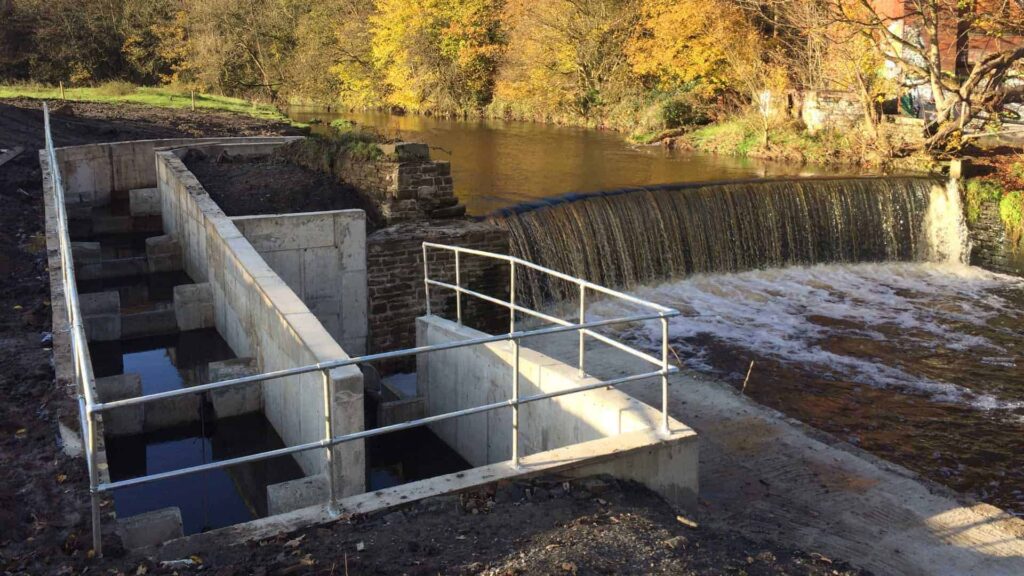Salmon and trout can swim in a stretch of Lancashire river where they’ve not been seen for 200 years, thanks to an ambitious Ribble Rivers Trust project.
Work has just been completed on a fish pass at Dunkenhalgh Weir, allowing salmon and trout to swim as far as Accrington for the first time in two centuries and increasing their breeding habitats.
The £160,000 scheme is the Trust’s 14th new fish pass delivered through the Ribble Life Together project supported by the National Lottery Heritage Fund.
The Dunkenhalgh Weir fish pass has taken more than five years to plan, design, fund and build and was constructed in tandem with a similar project completed at Oakenshaw Weir in 2017.
“Identifying sites that will maximise benefits for the river and delivering fish pass projects has been one of our specialities over the last ten years,” said Harvey Hamilton-Thorpe, RRT’s programme manager.
“This latest fish pass is one of our biggest and most expensive because it was a major civil engineering project installed on a very large weir. These projects make a huge difference in improving the river and they’re also fascinating for local people. We’ve had groups of school children down to visit the site and lots of interest from residents and people using the public footpath.”
The Dunkenhalgh Weir is a popular recreation spot on Hyndburn Brook between Rishton and Clayton-le-Moors, a site chosen for a pass because the weir was preventing fish from migrating naturally.
Rivers, like those on the Ribble catchment, can become fragmented when structures in their channels prevent natural movement of river wildlife.
These structures can include weirs, culverts and dams, mostly built during the Industrial Revolution to power mills or divert watercourses. On one side of Dunkenhalgh Weir is the disused Holt Corn Mill and more recently, the weir provided water for Rishton Paper Mill.
The Ribble Life Together project has delivered the fish passes to modify some of these structures, enabling wildlife to move more freely.
Dunkenhalgh Weir required a ‘pool and traverse’ fish pass with small ‘steps’ and resting pools for the fish to ‘climb the ladder’ between the river downstream and upstream of the weir.
“This fish pass was quite challenging in terms of construction because of the large excavation involved, the issue of stability of the weir and preserving the historic structure of the river but the work went smoothly,” said Adam Walmsley, RRT’s capital works officer.
Dunkenhalgh Weir is 2.2m high and 16.5m wide and the new fish pass has enabled 2.1km of river to be opened up.
Once the fish passes are completed, scientific monitoring continues to gauge how much the river environment improves as a result.



